- Administrator
- Albums and Singles
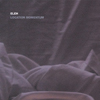 With a slew of vinyl releases in their backcatalog, this is the first digital release for the enigmatic ultra-minimalist electronic project, formed to pay tribute to the titans of drone such as La Monte Young, Pauline Oliveros, and Charlemagne Palestine. Their approach definitely demonstrates their lineage, but it is never derivative or stale. The result is a beautifully sparse tapestry of analog electronics, which is both enhanced and slightly hindered by the purely digital medium.
With a slew of vinyl releases in their backcatalog, this is the first digital release for the enigmatic ultra-minimalist electronic project, formed to pay tribute to the titans of drone such as La Monte Young, Pauline Oliveros, and Charlemagne Palestine. Their approach definitely demonstrates their lineage, but it is never derivative or stale. The result is a beautifully sparse tapestry of analog electronics, which is both enhanced and slightly hindered by the purely digital medium.
The long opening track "Heleneleh" is intentionally simple droning electronic hum, pitched near the 60hz hum of a guitar amplifier to resemble one sitting far off in another room. The rise in pitch approximately three minutes in is a drastic one, given how intentionally static the track is. The tones eventually join each other in harmony before being met with a third, almost ringing bell type tone. Towards the end a resonant, almost orchestral texture arrives, the various pitches existing together and generating independent harmonics, all with the familiar warmth of an analog synthesizer.
The short "Linear to Circular/Vertical Axis" is a veritable beehive of activity after the frozen layers of the previous track, consisting of reversed surges of tone with significant underlying variation. There is a crunchy lo-fi digital rust to the sound that makes it stand out compared to the purity of the other longer pieces. "Circle One: Summer Transcience" takes a much different approach, beginning immediately with a high frequency tinnitus ring that stays present for the entire duration, but is presented at a restrained volume that keeps it from becoming too disturbing or irritating. An ultra low frequency sub-bass enters, eventually oscillating rapidly. It’s an intentional study in extreme sound variation, the high frequency is psychologically effective, the low end is far more physical.
"Observation Wheel" meshes almost bird-like chirps and swelling low frequency drone with rhythmic stabs of white noise. There is a subtle variation throughout, but it has a warm ambient quality, with the slowly undulating low end sound slowly pulsating like a boat in the ocean. The closing "Rotational Change for Windmill" keeps a chirping electronic tone through the first half that is repetitive enough to encroach on annoying, but never crosses the threshold. Even at low volume, a combination of ultra and sub-sonic tones and abrasive tones can be heard, almost like an old Whitehouse album being played from a few doors down.
When I say enhanced and hindered by being on CD, I think the format does wonders for the purity of sound: Eleh is known for low volume pure tones that are presented here with pristine clarity. However, the digital purity doesn’t give the disc an overly clinical or sterile sound at all, there is still the analog warmth of the source material that shines through. On vinyl though, the interaction between the imperfections of the medium and the Spartan tones would give a unique listening experience each time. So it is neither a plus nor a minus fully, it is simply a difference.
Eleh’s first foray into the digital realm is one that doesn’t hinder the warm analog glow of the sound in the slightest, and allows instead a full pure transmission of their simple, yet inviting electronic drone. Minimalist in the classic sense of the world, it is the kind of album that demands full attention, played in a setting without any distraction or intrusion. Under those conditions, it is a perfectly engrossing hour of beauty.
samples:
Read More
- Administrator
- Albums and Singles
 The dichotomy at work through Kyle Parker's exquisite new album rivals the highest peaks of heaven and the lowest valleys of Hades. Mixing a bit of congestion within his soaring pieces, Parker—under the pseudonym Infinite Body—produces an album that borrows just as much from his noisier past as it does from Classical and Baroque masters long forgotten amidst the digital age.
The dichotomy at work through Kyle Parker's exquisite new album rivals the highest peaks of heaven and the lowest valleys of Hades. Mixing a bit of congestion within his soaring pieces, Parker—under the pseudonym Infinite Body—produces an album that borrows just as much from his noisier past as it does from Classical and Baroque masters long forgotten amidst the digital age.Carve Out the Face of My God isn't about technique or pomp but rather about precision. Each track is deep with rife, as Parker's noisier tendencies war with his elegant strokes. The album's opening salvo, "Dive," requires immediate obedience. The title not only suggests the musical choices of Parker throughout Carve, but provides a gentle command to the listener. Without giving yourself up to Parker's brand of homogeny, you are fighting your inner urges; those that compel you to dream of drowning in borderless seas and jumping into bottomless canyons. "Dive" begins with a singularly held note; trapped in white noise amber. Like the chrysalis frozen in centuries of molasses and mud, "Dive" is a moment of time fixed in Parker's own primordial goo. It takes patience to let "Dive" unravel but when Parker cracks its shell and watches it begin to rediscover movement, the noise subsidies and all that is left is a beauty only 18th century masters once touched.
The collision of classical aesthetics and modern technology is far from new but Carve Out the Face of My God approaches the crash in the aftermath, scavenging through the debris to find only the most useful and unexpectedly pristine. Parker finds the face of his god—whatever it may be—within this wreckage. Wisps of synthesizer waft above the mangled pile of machine and flesh, lifting Parker's vision into the heavens it promises to chisel. As one might imagine, the product is as uplifting as a godly epiphany. "What They Wanted to Be Useless" is a chorus of angelic background noises carefully lifted to the skies on a backbone of pipe organ. The metallic strikes of "Sunshine" act as the cleansing storm to wash away our robotic sins; those forged direct contact with bluetooth accessories and plastered atop regal entertainment centers overflowing with miles of loose cord and liquid crystal displays. Tucked submissively within these shouts to the gods are two-minute mantras to clear our minds and ease our hearts.
Parker's creations offer repentance for our ignorant mistakes, whatever they may be and to whomever needs our apology. It is from this idea that Parker's connections with Beethoven, Bach, and Handel are easy to find. These men of classic build crafted songs meant to divine truth from the actions of their god. It is here we find Kyle Parker, wrapped in the shroud of his own devotion to an idea far greater than any man could ever fathom. It is within this idea that we are found and offered musical salvation. Carve Out the Face of My God is a prayer for everyone to a being that will never answer and is likely to have never been. The willingness to say it anyway in front of anyone who will listen is what draws power into Carve, ultimately doling it out to those of us who submit to Parker's will. In music there is power and Parker has plunged his fingers into its heart.
samples:
Read More
- Administrator
- Albums and Singles
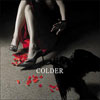 Declaimed in a number of pompous and unhelpful reviews for mostly unintelligible or contradictory reasons, Marc Nguyen Tan's second full-length as Colder is, in reality, a dark and seductive electronic record with virtues to spare. Whether updating the anthemic possibilities of new wave or cross-breeding fake jazz with dub and cold motorik, Heat exudes a cool, sophisticated, and infinitely accessible atmosphere that is entirely unique to it.
Declaimed in a number of pompous and unhelpful reviews for mostly unintelligible or contradictory reasons, Marc Nguyen Tan's second full-length as Colder is, in reality, a dark and seductive electronic record with virtues to spare. Whether updating the anthemic possibilities of new wave or cross-breeding fake jazz with dub and cold motorik, Heat exudes a cool, sophisticated, and infinitely accessible atmosphere that is entirely unique to it.
Why some bands will always be heralded for the appropriation of their influences and others forever doomed to jeers and insults is well beyond me. If there were any consistency to the praise or defamation perhaps I could discover the math necessary for choosing who should get my approval and who my censure. Such calculation and consistency constitute a phantom, however, one that unjustly haunts records according to this or that writer's whim. In 2005, Heat was just such a victim. Some publications caught on to its dance-oriented rhythms and stark melodies, but more often than not Tan caught flack for liking New Order and Joy Division a little too much. Nevermind that Colder is probably more indebted to Gary Numan, David Bowie, and Brian Eno, Joy Division and New Order are two unanimously loved bands with plenty of lauded followers, derivative or otherwise. Mentioning either one in a review only to hold them over a band's head like a threat isn't just ridiculous, it's lazy.
Besides, Heat is where Marc steps out of their shadow and into his own shoes. Dub and post-punk still figure heavily into his brew, but to them Marc adds a darker attitude ("On My Mind"), jazzy flourishes ("Your Face" and "Fade Away"), a more band-oriented sound (especially "To the Music"), and an even more distinctive sense of rhythm than is found on Again. As to the latter, it might be Colder's most distinctive feature. Tan's rhythmic sense is at once funky and awkward. Even when a song is thumping forward in standard time, Marc manages to make the rhythm sway and stagger like it's ready to fall apart. In some cases, he'll use every one of the instruments in a song to help create a kind of dizzying effect, as on "Wrong Baby" and "Losing Myself." In both cases, the entire ensemble throbs and reverberates together, creating a mechanical effect that's as hypnotic as it is cold and robotic. To that extent, perhaps Neu! and Kraftwerk are better points of reference than anyone else mentioned in this review. In any case, before hearing him sing, or even before one of his already distinctive and simple melodies pop up, I can tell Colder apart from almost any other band thanks to Tan's rhythms.
But, Heat isn't beyond criticism. Its lyrics are thin in places, though they match their songs well enough and are way more forgivable than the junk certain other media darlings pass off as lyrics. If Interpol can get away with singing about couches and... whatever the hell they're talking about... then certainly Colder can get a pass for being a little repetitive. It's a happy coincidence that Heat's biggest and most obvious flaw is also one of its more endearing qualities. Marc obviously tried very hard to make Heat more diverse than Again, but in some places it shows too much. The second half of the record is mostly successful in its blending of different styles, but "Downtown" stands out like a sore thumb and the start of "Tonight" is just too bright to fit comfortably anywhere in Colder's discography. Everything eventually falls back into place, however, and the album ends with some sinister organ-laden arrangements and a beautifully melancholic closer.
Heat deserves better than the grief it was given. Without a doubt it is a layered and complex record, but it's also very catchy and concise. The melodies are as solid as they come and the songs are sharp and memorable. That's his greatest virtue: Marc Tan writes excellent songs. This alone puts him head and shoulders above other bands playing the same game.
samples:
Read More
- Administrator
- Albums and Singles
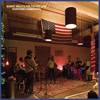 This live LP (and download for those inclined) picks up where previous live albums left off and show another side to Will Oldham’s work. Other live albums showcased his rock and folk inclinations but here his music sounds like it belongs on the stage of the Grand Ole Opry rather than in the clubs he usually frequents. Wonderfully performed and perfectly captured, Funtown Comedown sees Oldham push further into a mainstream country sound like he did on last year’s Beware (though strangely includes no songs from that album here). However, his charm and larger than life character still come through strongly.
This live LP (and download for those inclined) picks up where previous live albums left off and show another side to Will Oldham’s work. Other live albums showcased his rock and folk inclinations but here his music sounds like it belongs on the stage of the Grand Ole Opry rather than in the clubs he usually frequents. Wonderfully performed and perfectly captured, Funtown Comedown sees Oldham push further into a mainstream country sound like he did on last year’s Beware (though strangely includes no songs from that album here). However, his charm and larger than life character still come through strongly.
Picking through songs both old and new, Oldham and his band take the most country-ish elements of Oldham’s songs and amplify them. Mandolins, banjos and fiddles are backed with a double bass, bringing the music back in time to an era where artists like Johnny Cash and Merle Haggard were clearing the path for whippersnappers like Oldham. Already acknowledged by Cash (who covered Oldham’s “I See a Darkness”), Oldham in turn tips his (pink baseball) cap to Haggard with a cover of “Ramblin’ Fever.” Elsewhere, a cover of The Stanley Brothers’ “Hemlocks and Primroses” brings attention to the influence of bluegrass on Oldham’s writing. Taken together, these covers show how wide-ranging Oldham’s writing is; he amalgamates so many different styles of songwriting into his own idiosyncratic style, cherry picking the best of each style for his songs.
With the Picket Line backing him, “Wolf Among Wolves” loses all its sinister undertones and instead sounds like something that Patsy Cline would have sung (although maybe she would have drawn the line at howling but who knows). The transformation reinforces the wolf in man’s clothing imagery in the song, the bite of the words hidden beneath all the prettiness. Cheyenne Mize’s backing vocals on “Lay and Love” may be less dramatic than Dawn McCarthy’s original vocals on the studio version but Mize imbues the song with an equal amount of tenderness and a quiet beauty. Mize’s vocal contributions throughout the album act as a suitable foil to Oldham’s own cracked singing.
Although Funtown Comedown can be viewed as a stopgap release before Oldham unleashes his next album (The Wonder Show of the World coming out in March according to a saucy internet viral video), it would be erroneous to discount it as being just for completists. Just as his last live album Is it the Sea? stood proudly beside his classic studio output, Funtown Comedown also rubs shoulders with his best work. Granted the songs are all familiar (even if I’ve never heard Oldham sing them before) but the spin the band give on the songs make them sound new again.
This review was made from the vinyl version of the album, so unfortunately there are no sound samples at this point in time, apologies!
Read More
- Administrator
- Albums and Singles
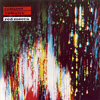 Hardcore CV fans and anyone who's a connoisseur of “classic” industrial are always quick to cite this as one of the zeniths of the genre, and it isn’t a claim that should be taken lightly. One of the darkest records ever made, it acts as the Maggot Brain to The Conversation’s Mothership Connection: it’s like when P-Funk were hanging with the Process Church and writing songs about finding decaying corpses of dead friends.
Hardcore CV fans and anyone who's a connoisseur of “classic” industrial are always quick to cite this as one of the zeniths of the genre, and it isn’t a claim that should be taken lightly. One of the darkest records ever made, it acts as the Maggot Brain to The Conversation’s Mothership Connection: it’s like when P-Funk were hanging with the Process Church and writing songs about finding decaying corpses of dead friends.
Before Red Mecca, the full-length releases from the Cabs had been a bit less than cohesive. Mix Up and Voice of America were both great albums, but had a lot of abstract tracks that felt more like experiments than fully fleshed out songs. The band’s singles were great, but showed a band unsure of what they wanted to do. For every chilling "Eddie’s Out" there was a snotty, punk-ish "Nag Nag Nag". Three Mantras, with its two side-long tracks, was just as experimental on its own, but heralded some of the sounds that would gel here. The amalgamation of rock tendencies in "Western Mantra" and use of tape manipulation in "Eastern Mantra" set the stage for this sinister, bleak album.
Titled due to the band’s interest in the growing issues in Afghanistan and Iran at the time (1981), it was the culmination of American Christian fundamentalism and Muslim extremism taken to its possibly apocalyptic end. The material doesn’t overtly reference any of this though: the Christian preacher samples that would characterize their later work are nowhere to be found. The mood, however, is one of corrupt spirituality: murky sounds that are symbolic of murder for the sake of religion. Given how little things have changed politically in the near 30 years since this album's release though, I just wonder how the situation hasn’t inspired the same level of brilliance in other artists.
Opening and closing with faithful covers of Henry Mancini’s "A Touch of Evil," the Hollywood bombast and grandeur of the original theme is reduced to sparse bongo drums and reptilian synths and horns slithering over a rudimentary bass line. The chilling tone of the track foreshadows what’s to come: unidentifiable bits of sound hiding amongst the familiar instrumentation.
The "lighter" moments, or more appropriately the less dark ones are scattered throughout the album’s all too brief running time. "Sly Doubt" ranks up there with the funkiest tracks the band ever recorded, with its up-front bass line and treated drums from Nik Allday casting an alien shadow. Richard H. Kirk’s nauseous guitar stays low in the mix, as does Chris Watson’s organ drone, leaving the focus on Stephen Mallinder’s bass and vocals, the latter delivered heavily treated and with a hiss to render the words nearly indecipherable. For all its obtuseness, there is enough overt sleazy funk that would make it playable in a strip club…but more appropriately one run by the Order of the Solar Temple where all the girls try and hide the significant scars of ritualized abuse.
"Red Mask" opts more for the rock side of the band’s sound, with Kirk’s mangled guitar and Watson’s electronic organ leads functioning as some dark, mutated take on 1960s psychedelic rock, bolstered by the buzzing spring-reverbed metronome drums. "Black Mask" on the other hand, pushes the sound more into modern dub territory, with Mal’s bass and the drums leading the charge, with electronics and voice samples acting as minor accents to the sound. The swirling effects and damaged horns of "Spread The Virus" resemble a more song-based take on the "Eddie’s Out" single, though here it uses the same proto-techno drum machine beat from that single’s flip side, "Walls of Jericho." Rather than the pure demented tape manipulations of "Eddie’s Out," the sound here is one of schizophrenic mania, with the treated drums and rhythmic bass clashing with the spastic horns and Mal’s hateful ranting.
The remaining tracks are more restrained; yet still ooze that same red-lit murky darkness of the rest of the album, perhaps even more so. The short instrumental "Landslide" showcases Kirk’s vaguely Middle Eastern surf guitar playing over heavily treated drums and Watson’s organ set on "horror movie" that comes off as wonderfully sinister, but not ham-handed or forced. So many bands try and be "scary" with their sound, but it always sounds so cliché or trite. Here it just IS dark.
"Split Second Feeling" matches the same guitar sound with more conventional organ and Mal’s heavily echoed and delayed vocals that actually sound far less agitated than on the rest of the album, but still have a sense of unease and sickness about them that puts it squarely in league with the remainder of the disc. Rather than the lurking menace, there is more of a sense of despair and fear conveyed.
The album’s centerpiece, and highlight, is the ten minute dirge "A Thousand Ways" that slowly begins with funeral church organ tones rising out of dark reverberated passageways. Mal’s bass keeps the track moving, as does the simple, whip-lashed rhythm. The vocals, which mostly consist of angered ranting a bit too far behind the microphone, are met with Kirk’s positively anemic guitar sound, sounding like the audio equivalent of malaria, pushing the track even further into the bowels of hell.
Even the full package of album art furthers this image: the multicolored, melting abstract image on the front is coupled with stoic looking portraits of the band inside, posing with large, ritualistic cymbals in front of them as if preparing for some blasphemous incantation. The fez-wearing statue head in the final page of the CD booklet is far beyond creepy, to say the least.
After this album the Cabs would go on to create the also-brilliant 2x45, which added a healthy dose of jazz to this formula, which I feel diluted some of the force and darkness that’s here. After that, Watson departed for the Hafler Trio and the remaining duo of Mal and Kirk began mining their own paranoid, survivalist form of funk influenced synth pop, and quite successfully so. I’d be remiss to not consider the trio of Virgin albums (The Crackdown, Microphonies, and The Covenant, the Sword and the Arm of the Lord) amongst the most brilliant electronic pop recordings ever, but the band was never as dark and frightening as they were here. While the greedy side of me is of course upset that there were no other albums like this, the rational side knows that such a situation would have diluted the impact of Red Mecca.
samples:
Read More
- Administrator
- Albums and Singles
 The meeting of one of Sweden’s premiere drone noise collective and the electronic duo featuring the king of Elgaland-Vargaland produced this single track where no input mixing boards dual with amplified rakes and found instruments to produce an expansive drone piece that isn’t afraid to get messy.
The meeting of one of Sweden’s premiere drone noise collective and the electronic duo featuring the king of Elgaland-Vargaland produced this single track where no input mixing boards dual with amplified rakes and found instruments to produce an expansive drone piece that isn’t afraid to get messy.
The single improvised track begins with overt reverberated scrapes from a rake and other found sounds, (courtesy of the Sons of God) baked in reverb and far too jarring to be rhythmic. The scrapes are eventually paired with a distant electronic tone that haunts in the distance. The constant study of the metallic grind of the rakes surprisingly doesn’t get dull or tedious, as both Leif Elggren and Kent Tankred use the humble tool as an instrument more than just a sound effect.
Subtle synth punctuations by the Skull Defekts guys slowly enter and make their presence known. The constant dull pulse of the keyboards contrasts the otherwise dynamic improvised sounds. Eventually the synths win this battle of sounds, dominating the mix with massive sheets of low end swell that casts the scrapes into an entirely different light: the darker feel of the track sounds more like chains being dragged through a dungeon than electro-acoustic improvisation.
The synthetic sounds become the focus even more as the track goes on, waving a dronescape that stays static while the improvised sounds skitter across. The sound is definitely abrasive, but the textures are not harsh. Instead, the track continues to lurk around in the shadows. The electronic sounds become more varied, but always remain cautiously guarded among the chaotic noises.
The final third of the track allows the noise to flow, with the overdriven synths matched with violent crashes and bangs from the gardening implements. It reaches that fuzzy grind that rivals some of the best noise artists working today. After this violent outburst, the sounds retreat into an echo chamber of synth waves, random clattering and bashing around to conclude the performance as it began.
As best as I can tell, the proceedings are exactly as they occurred in Studio Dental a few months ago, which exemplifies the skill and nuance of these two projects. There are other artists out there who seek to create similar sounds through the use of constant sound manipulation and digital treatments, but this the result is one of purely organic collaboration. Kudos also to Utech, for releasing this and delving into even more abstract realms than the drone metal and noise the label is known for.
samples:
Read More
- Administrator
- Albums and Singles
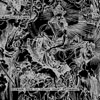 Since his recent reemergence, Matthew Bower has been more than happy to continue pushing his venerable project further and further into raw noise territory while bringing in a fair share of black metal influenced chaos to bolster the already maxed out volume levels. Here is roughly 100 minutes of pure feedback worship and dedication to distortion pedals. However, there’s none of the noise rock tendencies of Xaman or IIIrd Gatekeeper, for better or worse.
Since his recent reemergence, Matthew Bower has been more than happy to continue pushing his venerable project further and further into raw noise territory while bringing in a fair share of black metal influenced chaos to bolster the already maxed out volume levels. Here is roughly 100 minutes of pure feedback worship and dedication to distortion pedals. However, there’s none of the noise rock tendencies of Xaman or IIIrd Gatekeeper, for better or worse.
There’s no pretense or interludes here: disc one, track one, "Shivering Aurora" immediately cuts in with shirll guitar feedback and swells of noise, undulations building into rhythms via delays. There’s a slight hint of Lou Reed’s Metal Machine Music to be found, but in a more organic, natural sense rather than a "fuck you" to a record label one. "Gateway to Blasphemous Light" is similar: all midrange painful noise that doesn’t relent, but there is still obviously a guitar buried amongst the distortion and reverb. Over on disc two, "Star Konstellation" is a similar piece of pure guitar squall.
Bower and company aren’t afraid to inject some heavier sound treatments and electronic effects into the six string revelry: "City of Dis" sounds like someone vacuuming over a guitar solo while a broken synthesizer and emergency sirens wail away in the background. "Basement of an Impure Universe" is feedback, heavy undulating static and shrill electronic squeals far more than any traditional guitar sounds.
The remainder of the tracks combine both elements to some extent. "Starlit Mire" focuses on deep droning buzzes and massive, infinite expanding guitar squeal as opposed to the aggression that comprises the other tracks. "Enochian Tapestries" meld swelling waves of noise and distorted guitar notes that are left out to decay, the sound positively rotting. "Blackened Angelwings Scythe the Billowing Void" sounds like a tortured guitar solo blasting inside an empty parking garage, simple but effective.
"Nibelungen" and "Rheingold" both rely heavily on guitar noise and feedback, but on both tracks there’s a vibe that they’re going to launch headlong into the blasted stoner rock that characterized the older Skullflower, but neither ever does. For that reason alone it’s the noise equivalent of blueballs….the whole time I was hoping for some massive drums and detuned bass to crash in, but they never do.
In the sense of a spectacle, this disc definitely fits the bill. There’s something to be said for over an hour and a half of unabashed guitar squall, but "Nibelungen" and "Reingold" both leave me wishing for some of Bower’s rock stuff to show up amongst the feedback and noise. There’s no reason both can’t co-exist, so how about something more like Xaman here?
samples:
Read More
- Administrator
- Albums and Singles
 Unlike previous solo efforts, here Baker is flanked by a concentrated orchestra, propelling his demur drones into consonant and complete compositions. The result is an album of staggering growth as Baker explores the elegant side of drone and the filth of classical percussion and strings that not only established Baker as an innovator but as a inventive curator of drone and its many variants.
Unlike previous solo efforts, here Baker is flanked by a concentrated orchestra, propelling his demur drones into consonant and complete compositions. The result is an album of staggering growth as Baker explores the elegant side of drone and the filth of classical percussion and strings that not only established Baker as an innovator but as a inventive curator of drone and its many variants.Above all else, Liminoid/Lifeforms is a definitive statement. Baker clearly states his objective with the first few notes of “Liminoid Part I,” never wavering from his desire to capture the elements of classical and romantic composition with modern techniques. The result is an album that is warm; thick with texture and sonic craftsmanship. Albums with this much attention to detail often crumble under the weight of expectation but Baker has nothing to atone for once the final note of “Lifeforms” fades into the abyss.
The greatest accomplishment of Baker’s foray into the classical is in its simplicity. Much like the great masters of composition, Baker is never afraid to do too much by doing too little. Each of the four parts that comprise “Liminoid” joins seamlessly. Not until the soaring vocals of “Liminoid (Part IV)” can we begin to notice how Baker has carefully flirted with the grandiose by indulging it so completely. The subtle hints of cello and violin coupled with the restrained guitars and percussion are slow to reveal themselves as something more than Baker’s usual fare. “Liminoid (Part IV)” becomes the unveiling of Baker’s masterpiece; when the quiet decoration that has been painstakingly built for 22-minutes engulfs the classical philosophy in a fiery pillar of modern ingenuity. In spite of its ambitious nature, the whole of “Liminoid” does not falter for even a single note. This is proof that experimental music can be manipulated using the principles of Romanticism without compromising the chaos theory and fringe accessibility that has found deep roots in various genres.
After the breathtaking beauty of “Liminoid,” Baker risks toppling his opus with the sedentary drone of “Lifeforms.” Yet the risk is well worth it, providing the perfect counterpoint to elegance of “Liminoid” while also proving to be its mirror—albeit of the warped, funhouse variety. Where “Liminoid” was poised and polite, “Lifeforms” is a test of patience and will. It maintains the grace of its segmented lead-in but the restraint of “Liminoid” is replaced with rambunctiousness. “Lifeforms” isn’t abrasive but a piece built on dissonance and misplacement. Its parts, unlike “Liminoid,” are those of worn jigsaw puzzles; connections don’t fit as they should, the tabs are frayed beyond recognition, and there are holes from missing pieces. In this there is a majesty that admirers of “The Ugly Duckling” (and its ilk) will appreciate. “Lifeforms,” when held against “Liminoid,” will seem the tremorring visage; but as a mirror and a companion, it divulges the secrets of success found within “Liminoid,” while annihilating the measuring stick of beauty used for far too long.
The labeling of Liminoid/Lifeforms as a high form of art may be a bit of hyperbole but within Aidan Baker’s classical excursion, there are far too many gems of old and new to call it anything else. Over the course of one hour, Baker builds a sturdy bridge over a crevice that once relied on the likes of John Cage and Terry Riley as its architects. Old world beauty and futuristic tones can work as one, creating music that is as challenging as it is universal.
samples:
Read More
- Creaig Dunton
- Albums and Singles
 The latest release from this up and coming Polish sound artist steps away from his usual preference for walls of digital noise and instead plunders through tapes of traditional folk music for source material, leaving enough evidence of its pedigree there, but taking it to far off realms of sound.
The latest release from this up and coming Polish sound artist steps away from his usual preference for walls of digital noise and instead plunders through tapes of traditional folk music for source material, leaving enough evidence of its pedigree there, but taking it to far off realms of sound.
The A side, titled "Wedding," opens with "Greek Catholic Stork Boy Choir of Ozerki Village," a rapid fire pulsing slab of cut up jittery notes. There’s obviously underlying musical elements there, but sped up, flanged, and covered in a digital noise sheen so as to not completely give up its source. The second piece, "Molomotki Ocarina Orchestra," keeps the same tone but locks it into a rhythmic loop that exhibits the smallest changes.
While the "Wedding" side was rapid, spastic and joyous; the "Funeral" side is appropriately slow and meditative. "School Girl Band of Gromovaya Balka" takes up the entire side B. It's a piece that uses the same type of source sounds as the A side but instead sequences them into a slow orchestral dirge. Here, knocking percussive elements, heavy sub-bass, and open, shimmery notes create an expansive drone.
The sound is one that’s a bit too harsh for the musique concrete crowd, yet not speaker-damaging enough for the noise kids. Thus, it exists in its own purgatory, waiting for listeners who are willing to step outside their comfort zone and embrace something different.
Read More
- Administrator
- Albums and Singles
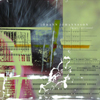 The first part of an expected trilogy devoted to iconic advances in technology, this marked the beginning of new stage in Jóhann Jóhannsson's career. While already established as an acclaimed composer at the time of its release in 2006, IBM 1401 was a bold leap forward in both concept and scale from all that preceded it. Although it was later eclipsed by the stone-cold instant classic that followed (2008's Fordlândia), it nevertheless remains a haunting, visionary, and unexpectedly personal work in its own right.
The first part of an expected trilogy devoted to iconic advances in technology, this marked the beginning of new stage in Jóhann Jóhannsson's career. While already established as an acclaimed composer at the time of its release in 2006, IBM 1401 was a bold leap forward in both concept and scale from all that preceded it. Although it was later eclipsed by the stone-cold instant classic that followed (2008's Fordlândia), it nevertheless remains a haunting, visionary, and unexpectedly personal work in its own right.
Great ideas rarely spring from nowhere and the genesis of IBM 1401: A User's Manual is no exception. The lengthy evolution of this piece began in 2001 when Jóhannsson's father told him about the "funeral" that he and his IBM coworkers arranged for the 1401 when it was discontinued in 1971. While he was obviously deeply attached to the computer because he was the primary maintenance engineer for the project (the 1401 was first mass-produced, reasonably priced business computer), the connection between Jóhann's father and his work actually extended into much deeper territory. Like his son, Jóhann Gunnarsson was an ingenious and musically savvy fellow, and he managed to figure out a convoluted way to make his computer "sing." In fact, the 1401 sang its own elegy at the ceremony, a brief theme from an old Icelandic hymn. It is a 30 year old reel-to-reel recording of this improbably sad ceremony that provides the central melody of the album's opening piece as well as the cornerstone of the entire endeavor.
Shortly after beginning work the piece, Jóhannsson shared his father's story with a new acquaintance (choreographer Erna Ómarsdottir) whose father had also been an IBM employee. Together, they embarked upon a lengthy and enthusiastic exchange of literary and cinematic inspirations and philosophical and creative ideas that gradually cohered into a touring dance piece built around his father's tape. At the time, the modest accompanying music was written for a string quartet. However, when Jóhann began editing the score for release as an album, he realized that something new needed to be added to compensate for the now missing human/visual element provided by the dancers. Realizing that the heart of the work lay in the juxtaposition of human warmth and cold machinery, he expanded to a 60-piece orchestra to intensify the sweeping melancholy of the music. More importantly, he also added another section: the heartbreaking coda of "The Sun's Gone Dim and The Sky's Turned Black." It is this final section that completes IBM 1401: A User's Manual and elevates it toward the realm of great art (incidentally, the title is intentionally borrowed from another work of great art, Georges Perec's Life: A User's Manual).
Jóhannsson is somewhat unusual in the field of modern composition, as he incorporates avant-garde influences and embraces unconventional sounds, yet remains unwaveringly focused on the distinctly un-edgy idea of crafting simple and beautiful melodies. As such, he has much more in common with populist film score composers than the more cerebral, theory-based works of the current serious classical music scene. While that aesthetic certainly gives Jóhannsson’s work more immediate appeal than that of his peers, it is not without its perils. IBM 1401 is packed full of heavenly, swelling strings that would not at all be out of place in a cinematic adaptation of a Jane Austen novel but for the omnipresent old computer recordings that buzz, hum, and swoop in the background. Sometimes he hits the perfect balance; sometimes he becomes a bit too saccharine for my taste. This tendency may just have stemmed from being relatively new to working on such a scale, as it seems to have vanished completely by Fordlândia.
While it is quite pleasant on a purely musical level, IBM 1401 actually requires some thought and reflection from the listener to be fully appreciated. Taken solely on its musical content, for example, "Part Two: IBM 1403 Printer" can seem kind of boring, as it is largely built around a recording of Jóhannsson's dad dryly describing the proper maintenance of his machine. Obviously, a 30-year-old recording of his father holds more emotional power for Jóhann than it does for me, but when it is contextualized as a man describing the care of a beloved friend that is now long dead, it becomes imbued with a strong sense of loss and nostalgia.
Despite the strength and beauty of the album's arrangements, it is the non-orchestral elements of album's bookends that I find most striking. The four simple repeating notes of the computer's death song in the opening piece are sublime and bittersweetly evocative, while the digitized voice endlessly intoning a gender-switched variation of Dorothy Parker's "Two-Volume Novel" in the album's closer is absolutely devastating. The depth of heartbreak and longing that can be conveyed by a mournful robot voice lamenting "the sun's gone dim and the sky's turned black, cause I loved her and she didn't love back" is both wholly unexpected and wrenching (though Jóhannsson ultimately derails the piece into a somewhat cloyingly triumphant finale). IBM 1401 may sometimes tread a bit too close to mainstream film scores and might be too overly sentimental in places to herald as an unqualified triumph, but it certainly hits some very stunning highs and is the most moving tribute that a computer (or a father) could ever hope for.
Samples:
- Part One: IBM 1401 Processing Unit
- Part Three: IBM 1402 Card Read-Punch
- Part Five: The Sun's Gone Dim and the Sky's Turned Black
Read More
- Administrator
- Albums and Singles
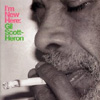 I long ago abandoned hope of a new Gil Scott-Heron record. Yet here it is: a delicate, intense, skeletal testament to his history, progress and survival. He covers Robert Johnson, Bill Callahan, and Brook Benton but this is a deeply personal album from which we all can draw hope; a beautifully convincing snapshot of an artist very much unbowed.
I long ago abandoned hope of a new Gil Scott-Heron record. Yet here it is: a delicate, intense, skeletal testament to his history, progress and survival. He covers Robert Johnson, Bill Callahan, and Brook Benton but this is a deeply personal album from which we all can draw hope; a beautifully convincing snapshot of an artist very much unbowed.
Gil Scott-Heron is perhaps best known for an astute analysis of US politics, race relations, and the role of the media. His voice personified hip intelligence and detached anger. The layers of detail and meaning in several of his songs have probably spawned PhD theses. Consequently, while most commentators were, for example, fawning over Ronald Reagan, some of us had Scott-Heron’s voice of alternate reason in our heads reminding us: “quick as Kodak your leaders duplicate with the accent being on the dupe - cause all of a sudden we have fallen prey to selective amnesia - remembering what we want to remember and forgetting what we choose to forget. All of a sudden, the man who called for a blood bath on our college campuses is supposed to be Dudley 'God-damn' Do-Right?”
The death, this weekend, of former Secretary of State Alexander Haig gave me a timely reminder of the enduring power of those songs from the 1970s and early 1980s. Even if President Obama came to my house and spent a week reciting the words “a public servant who exemplified our finest warrior-diplomat tradition of those who dedicate their lives to public service” that would never erase Gil Scott-Heron’s indelible image of “Attila the Haig / running around frantically declaring himself in control and in charge / The ultimate realization of the inmates taking over at the asylum / The screenplay will be adapted from the book called Voodoo Economics by George 'Papa Doc' Bush. Music by the Village People, the very military 'Macho Man.'”
Back then, such wide-ranging multi-faceted critiques were given added credence by Scott-Heron’s ability and willingness to look unflinchingly upon his own milieu. In that respect his work compares with Sam Selvon’s nuanced descriptions of his fellow London-based Caribbean immigrants in The Lonely Londoners and Moses Ascending. By using insider knowledge, honesty, wit and irreverence both avoid applying any sentimental or romantic gloss to their subjects, and do so without being seen as a traitor. That same craft makes I’m New Here such a believable and modest self-portrait. The record is an incomplete jigsaw made up of oblique admissions, recollections, and acknowledgements; pieces of a puzzle of a man. And by turning his unflinching gaze upon himself, Scott-Heron has created an album as strong as any he has recorded.
Part of the success comes from the uber stripped-down sound which allows us to concentrate on the voice. On the title track, for example, a plucked acoustic guitar adds to the sense of isolation as the voice speaks alone and then breaks into song. Elsewhere, as producer Richard Russell mentions, programmed electronics are used in lieu of strings. One obvious sample apart, there seems to be less of a collage approach going on, and more a natural transmission of what might be termed “musical DNA” for an abstract merging of rural blues, spoken word, urban soul, and the rhythms of scratching, skipping and playground handclaps with a fractured (almost Burial-like) post-hip hop bass-heavy sound. The latter, of course, owing a good measure of its existence to the rhythms and poetry in Scott-Heron’s earlier work.
Just as the music is drawn from disparate decades, so snatches of lyrics and spoken interludes illuminate points in the artist’s life, with gratitude for a joyful early childhood and respect for the effort and sacrifice of others counter-balanced by flashes of personal flaws. At times, Scott-Heron’s voice sounds weathered and a little blurry, but often it booms with honesty and a craving to communicate. The tracks “Running” and “The Crutch” are perhaps the bleakest here, but no self-pity or preaching slows the flow. "Me and The Devil" is a thudding take on one of Robert Johnson's most quoted recordings. Although, this being GSH, first time he sings the line "You may bury my body, down by the highway side" he quickly adds "I don't really care where you bury me, once I'm gone."
So I’m New Here is not an alternate State of The Union update for those hungry to hear the ultimate dissection of W’s two terms, 9/11, Clinton, Hurricane Katrina or, say, the rise of media bigmouths and their moron retinue. There’s no evidence that Gil Scott-Heron spent his time in prison with a set of Bush Cards devising odes to a litany of religious loonies, feeble yes men and unrepentant pirates. We may never get to hear his thoughts about John Bolton, Kenneth “Kenny Boy” Lay, Colin Powell, Ahmed Chalabi, Condeleezza Rice, Jeb Bush, John Negroponte, Dick “Big Time” Cheney, Lewis “Scooter” Libby, Robert Zoellick, Don Evans, Thomas White, Marc Racicot, Christie Todd Whitman, Ann Veneman, John “Crisco Oil” Ashcroft, Michael “FCC” Powell, Alberto Gonzales, Tom Scully, Paul “Wolfowitz of Arabia” Wolfowitz, William H. Haynes II, Karl Rove, Donald Rumsfeld, Robert McCallum Jr., George W. Bush, Gale Norton, Elliot Abrams, Elaine Chao, Larry Lindsey, Stephen “Mini-Nukes” Cambone, George Tenet, Viet “Spin” Dihn, Richard “The Prince of Darkness” Perle, William G. Myers III, John D. Graham, Robert Mueller, Mitch “The Blade” Daniels, Andrew “Yoda” Marshall, Lt. General Jay Garner, Karen Hughes, Andrew Natsios, Mercer Reynolds, Spencer “S.U.V” Abraham, Andrew Card, Douglas J. Feith, J. Steven Griles, Richard Armitage, Vice Adm. Dr. John Poindexter, Tom “Duct Tape” Ridge, Ari Fleischer, Paul O’Neil, or John Snow. Indeed, at this point that is about as likely as a project about his father: who legend has it was the first black player to feature for Glasgow Celtic F.C.
This album runs for only about half an hour but the beautiful combination of intellect, humility, sincerity and soul left me feeling reborn rather than short-changed. I’m New Here shows the benefit of being confident enough to use clarity and simplicity when writing and recording. It also demonstrates the value of saying what you have to say and then shutting up. We hear what now seems to be most important for Gil Scott-Heron: coming to terms with his mortality, with his life and the people who have helped shape him. In the process, he gives us a glimpse of the woman who raised him, a figure as vivid as any he has depicted in song or verse. I’m stunned by the pain, hope, and the love and enduring self-belief in these grooves. Thank God he’s recording again. As he says: “I’m the closest thing I have to a voice of reason.”
samples:
Read More

